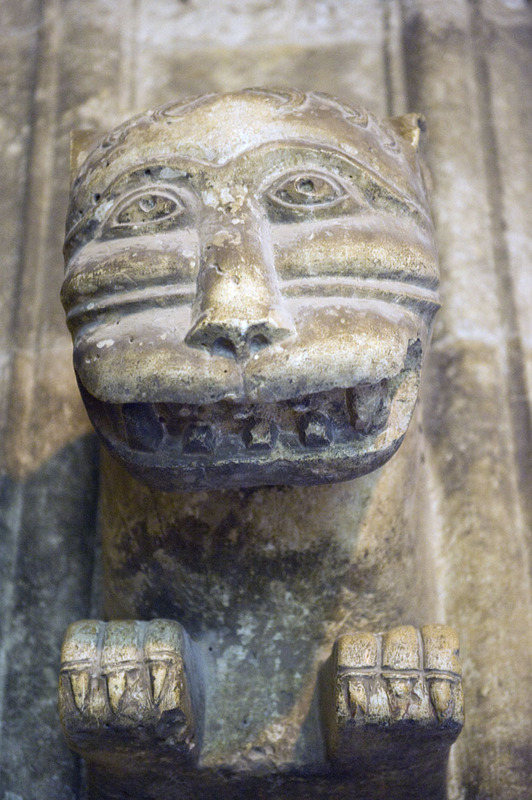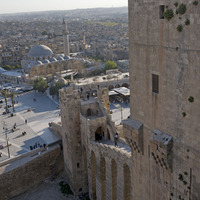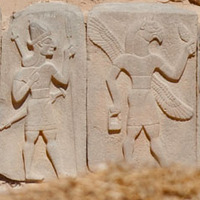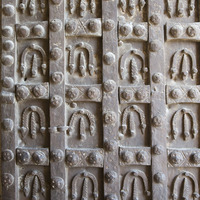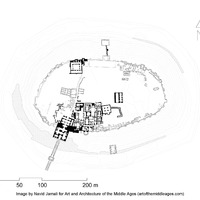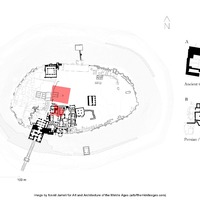Citadel of Aleppo
Date:
Late twelfth and early thirteenth centuries, with later additions
Location or Findspot (Modern-Day Country):
Syria
Description:
Aleppo (northwestern Syria, near Qal'at Sem'an) is one of the oldest cities in the world, continuously inhabited for millennia. The city enjoyed periods of great prosperity under the Shi'i Hamdanid dynasty in the tenth century and under Salah al-Din and his Ayyubid successors (1183–1260). The name derives from halab, Arabic for milk, and the biblical patriarch Abraham is supposed to have milked his flocks there. Numerous Old Testament, Christian, and Muslim shrines were renewed by the Ayyubid emirs, which helped reinforce pilgrimage networks and sacralize their territories. Foremost among these were four shrines to Abraham, which made Aleppo rival sites in Mecca and Jerusalem associated with the first monotheist, who was revered in the three faiths. Rebuilding or restoring ancient shrines helped strengthen the legitimacy of non-Arab dynasties, such as the Kurdish Ayyubids.
Towering about 40 meters over the city of Aleppo and its shrines is the citadel, a remarkable example of medieval military architecture atop a natural limestone outcrop. Under Malik al-Zahir Ghazi, the citadel was separated from the city walls and enclosed within them; its own walls were strengthened, and a defensive glacis was constructed, paved with smooth stone slabs that included ancient spolia and medieval Jewish tombstones. Reliefs from the Hittite temple of the storm god Hadad can still be seen at the site.
A tall bridge supported on pointed arches over the deep moat culminates in a monumental entrance complex built of high-quality ashlar blocks and with iron-clad doors (ca. 1182–1213; the upper story dates to the early fifteenth century). Above the first gate is a relief of intertwined, biting dragons, and two interior gates feature lion sculptures. These powerful apotropaic creatures, which also could have astrological or heraldic associations, are often found on Islamicate walls and gates.
Although the massive bridge over the moat suggests that the entrance to the castle would be on the same straight axis, attackers or visitors encountered a disconcerting maze once inside the entrance block. The path requires changing direction six times, passing through three gates, and encountering additional defensive devices that included *portcullises and *machicolations. The final gate leads into vaulted passageways and ultimately onto the citadel plateau, which measures about 160 by 280 meters. Despite its imposing monumentality, part of the outer wall collapsed, and it was repaired so poorly under Malik al-Zahir's successors that the Mongols were able to capture the citadel in 1260.
Towering about 40 meters over the city of Aleppo and its shrines is the citadel, a remarkable example of medieval military architecture atop a natural limestone outcrop. Under Malik al-Zahir Ghazi, the citadel was separated from the city walls and enclosed within them; its own walls were strengthened, and a defensive glacis was constructed, paved with smooth stone slabs that included ancient spolia and medieval Jewish tombstones. Reliefs from the Hittite temple of the storm god Hadad can still be seen at the site.
A tall bridge supported on pointed arches over the deep moat culminates in a monumental entrance complex built of high-quality ashlar blocks and with iron-clad doors (ca. 1182–1213; the upper story dates to the early fifteenth century). Above the first gate is a relief of intertwined, biting dragons, and two interior gates feature lion sculptures. These powerful apotropaic creatures, which also could have astrological or heraldic associations, are often found on Islamicate walls and gates.
Although the massive bridge over the moat suggests that the entrance to the castle would be on the same straight axis, attackers or visitors encountered a disconcerting maze once inside the entrance block. The path requires changing direction six times, passing through three gates, and encountering additional defensive devices that included *portcullises and *machicolations. The final gate leads into vaulted passageways and ultimately onto the citadel plateau, which measures about 160 by 280 meters. Despite its imposing monumentality, part of the outer wall collapsed, and it was repaired so poorly under Malik al-Zahir's successors that the Mongols were able to capture the citadel in 1260.
Relevant Textbook Chapter(s):
8
Repository and Online Resources:
• The city of Aleppo on UNESCO's World Heritage List.
• For more views, visit Dick Osseman's photography gallery.
Image Credits:
Dick Osseman, Navid Jamali
Tags:
Western Asian,
Islamicate,
Status and identity,
Animals,
Arabic,
War,
Mediterranean
